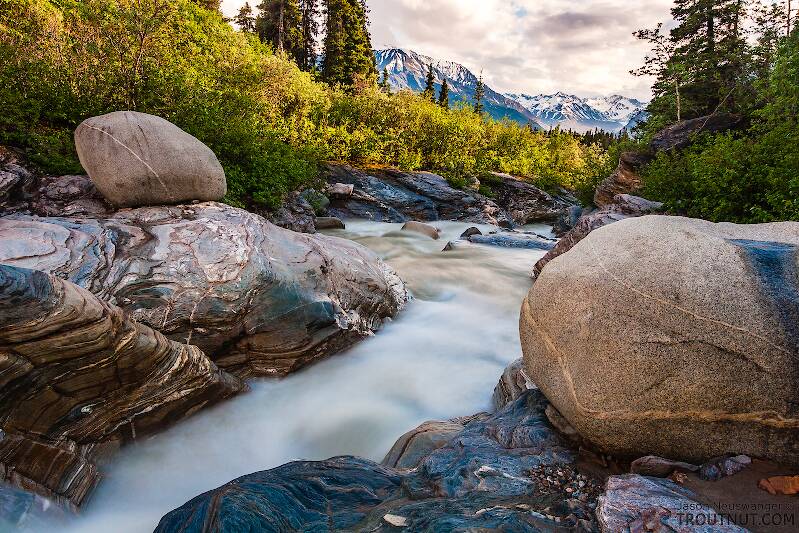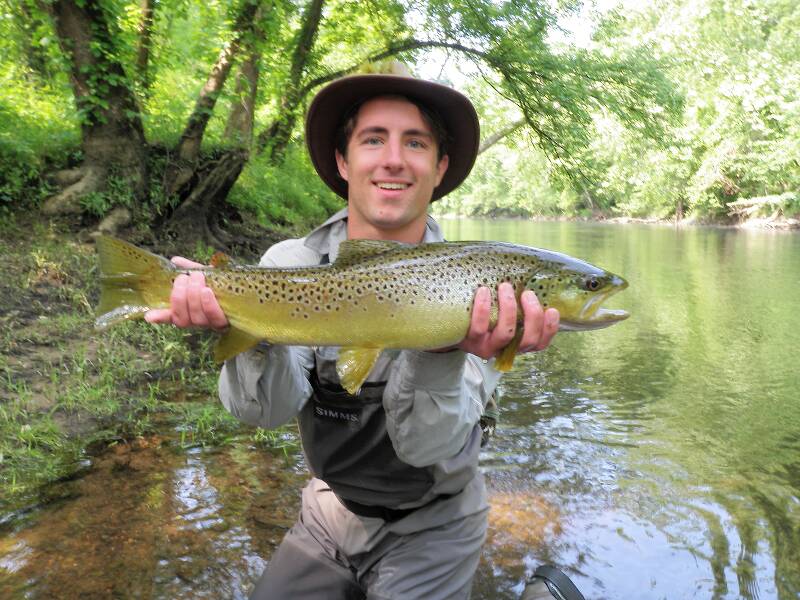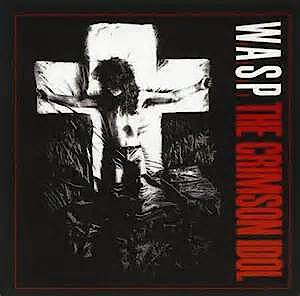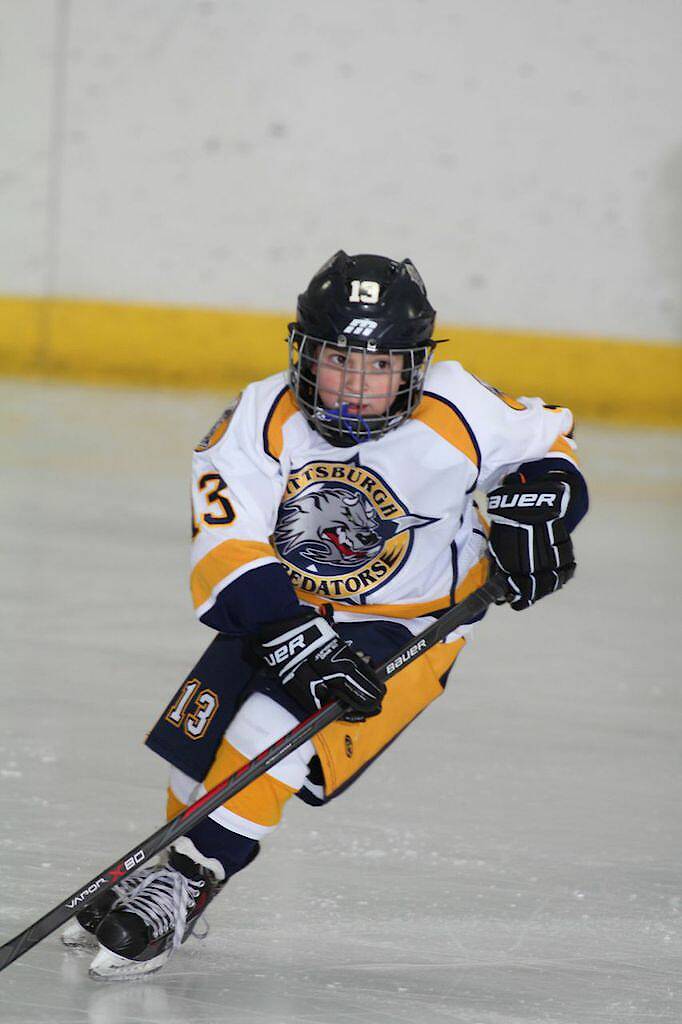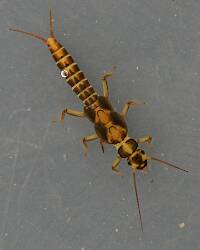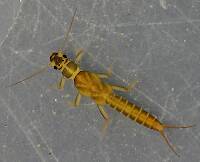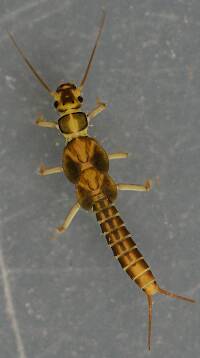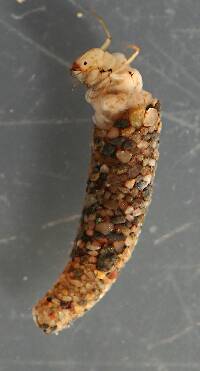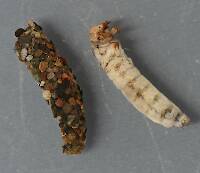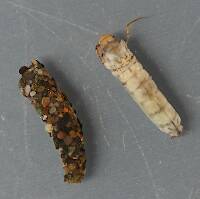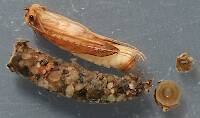
Blue-winged Olives
Baetis
Tiny Baetis mayflies are perhaps the most commonly encountered and imitated by anglers on all American trout streams due to their great abundance, widespread distribution, and trout-friendly emergence habits.
Featured on the forum

Troutnut is a project started in 2003 by salmonid ecologist Jason "Troutnut" Neuswanger to help anglers and
fly tyers unabashedly embrace the entomological side of the sport. Learn more about Troutnut or
support the project for an enhanced experience here.
Greenfish13
Posts: 4
Posts: 4
Greenfish13 on Apr 27, 2013April 27th, 2013, 10:03 pm EDT
Hello,
I am hoping that somebody could explain to me the difference between a riffle and pocket water.
I understand that a riffle is the fastest flowing water in a river and runs no deeper than 3 feet and that pocket water is the space behind a rock sticking out of the water. Where does pocket water in a river occur? Can pocket water occur in riffles? When trout occupy a riffle are they necessarily found in pocket water? Any input on this is greatly appreciated, thank you!
I am hoping that somebody could explain to me the difference between a riffle and pocket water.
I understand that a riffle is the fastest flowing water in a river and runs no deeper than 3 feet and that pocket water is the space behind a rock sticking out of the water. Where does pocket water in a river occur? Can pocket water occur in riffles? When trout occupy a riffle are they necessarily found in pocket water? Any input on this is greatly appreciated, thank you!
Sayfu
Posts: 560
Posts: 560
Sayfu on Apr 28, 2013April 28th, 2013, 5:45 am EDT
The riffle has even current, about the same sized rocks creating the dancing water on top. I can cast my soft hackles and my flyline, and fly will swing evenly through riffle water. And it is not the fastest flowing water. Rapids are where the water flows the fastest. Pocket water is formed in boulder strewn sections with elevation drop exceeding those of say a flat above, or below, and a pocket is identified with slow water below the boulder, and current seams flowing on each side of the boulder. You could have pocket water dispersed throughout a riffle, or rapids. And the boulders do not have to break the surface. I rowed my driftboat through combinations of pocket, and riffle water just the other day, and the boulders that are under the water, but not far enough under to allow you to row over them freely will let you know if they aren't far enough below.
Greenfish13
Posts: 4
Posts: 4
Greenfish13 on Apr 28, 2013April 28th, 2013, 6:06 pm EDT
Thank you Sayflu for your help.
Can a riffle just be a riffle with water flowing through it? Would there be fish holding in a riffle or would the current be to strong for them that they would instead prefer to be in pocket water or more likely to be in areas closer to the edge of the bank where the current might be slower? I have read that riffle water is considered to be the rapids or are you suggesting that a rapid and a riffle are two different sections of a river?
Can a riffle just be a riffle with water flowing through it? Would there be fish holding in a riffle or would the current be to strong for them that they would instead prefer to be in pocket water or more likely to be in areas closer to the edge of the bank where the current might be slower? I have read that riffle water is considered to be the rapids or are you suggesting that a rapid and a riffle are two different sections of a river?
Sayfu
Posts: 560
Posts: 560
Sayfu on Apr 28, 2013April 28th, 2013, 6:27 pm EDT
Riffle water is not that fast of water. You can easily wade out into riffle water without that much resistance against your body. Riffles are great areas for aquatic insects to inhabit, and crawl amongst the rocks. Fish will hold in deeper water off the end of riffles, and out in deeper water adjacent to riffles, and then feed in the riffles when bugs get active prior to an emergence, and during the emergence. Riffles are generally not regarded as holding water more so as feeding water for trout. On my river, the SF of the Snake, it is common, however, to find big trout holding in shallow water near the bank in riffle water. Osprey overhead often make trout leary of holding in riffle water.
Jesse on Apr 29, 2013April 29th, 2013, 6:27 pm EDT
Well said by Josh. Depending on whats going on in the river such as temperature and bug activities, will depict whether trout are going to be riffles, runs, pools, etc.. He pretty much summed it up nicely.
Most of us fish our whole lives..not knowing its not the fish that we are after.
http://www.filingoflyfishing.com
http://www.filingoflyfishing.com
Greenfish13
Posts: 4
Posts: 4
Greenfish13 on Apr 30, 2013April 30th, 2013, 4:00 pm EDT
Thank you, I appreciate the help from both of you. I will have more questions to post soon. Have a great day!
Adirman on May 1, 2013May 1st, 2013, 1:22 pm EDT
Is there any criteria for water depth also differentiating a riffle from say, a rapid? Riffles are indeed a bit slower than a rapid in current velocity but are they also necessarily shallower also?
Martinlf on May 2, 2013May 2nd, 2013, 4:28 pm EDT
I think rapids can be relatively shallow, or deep, depending on many factors such as gradient, stream size, stream width in relation to volume, and that riffles can be relatively deep in relation to some rapids. Essentially, I believe velocity and structure account for the difference, not depth.
"He spread them a yard and a half. 'And every one that got away is this big.'"
--Fred Chappell
--Fred Chappell
Greenfish13
Posts: 4
Posts: 4
Greenfish13 on May 10, 2013May 10th, 2013, 4:42 pm EDT
would a riffle also b considered a type 1 rapid?
Martinlf on May 10, 2013May 10th, 2013, 4:57 pm EDT
As an old whitewater guide, I'd venture that some class 1 rapids are riffles, while others are not. For whitewater paddlers rapid class has more to do with the danger level than the kinds of things trout fishermen concern themselves with.
"He spread them a yard and a half. 'And every one that got away is this big.'"
--Fred Chappell
--Fred Chappell
PaulRoberts on May 10, 2013May 10th, 2013, 8:17 pm EDT
Riffles are erosional zones, pools depositional. Each come in many flavors.
Entoman on May 11, 2013May 11th, 2013, 8:42 am EDT
Riffles are erosional zones, pools depositional. Each come in many flavors.
Yep...
Practically speaking, to me a rapid is a riffle (usually with big boulders scattered) that I wouldn't dare wade except at the margins. Or put the other way - A riffle is a rapid (usually without big boulders scattered) that I am perfectly comfortable with wading to and fro in.
Pocket water is a run or riffle with big rocks in it. The latter is shallower and would be "riffley" without the big rocks. The former would be smooth.
"It's not that I find fishing so important, it's just that I find all other endeavors of Man equally unimportant... And not nearly as much fun!" Robert Traver, Anatomy of a Fisherman
PaulRoberts on May 11, 2013May 11th, 2013, 11:29 am EDT
Riffles are erosional zones, pools depositional. Each come in many flavors.
Yep...
Practically speaking, to me a rapid is a riffle (usually with big boulders scattered) that I wouldn't dare wade except at the margins. Or put the other way - A riffle is a rapid (usually without big boulders scattered) that I am perfectly comfortable with wading to and fro in.
Pocket water is a run or riffle with big rocks in it. The latter is shallower and would be "riffley" without the big rocks. The former would be smooth.
I'll agree with that.
Martinlf on May 12, 2013May 12th, 2013, 6:45 am EDT
Me too.
Kurt's comment helps to illustrate why whitewater canoe terminology is less useful in reference to trout fishing. Some class 1 rapids can be shallow and easy to wade, while others are very deep, though without considerable danger to those floating through them. Terms such as "riffle," "run," and "pocket water," are much more useful in reference to trout fishing. And in regard to the original question about where trout can be found, as Sayfu and Jesse explain, trout like structure, large and small, where they can find a break from current, protection from predators, etc. Rocks that create pocket water are but one kind of structure found in streams. And, during hatches, trout may move from a holding lie to a feeding lie, if they are not already in a prime lie, so determining where trout can be found in a riffle depends on multiple factors. They often can be found in pocket water, but they can be found other places too, including smoother riffles and runs, under the right conditions.
Kurt's comment helps to illustrate why whitewater canoe terminology is less useful in reference to trout fishing. Some class 1 rapids can be shallow and easy to wade, while others are very deep, though without considerable danger to those floating through them. Terms such as "riffle," "run," and "pocket water," are much more useful in reference to trout fishing. And in regard to the original question about where trout can be found, as Sayfu and Jesse explain, trout like structure, large and small, where they can find a break from current, protection from predators, etc. Rocks that create pocket water are but one kind of structure found in streams. And, during hatches, trout may move from a holding lie to a feeding lie, if they are not already in a prime lie, so determining where trout can be found in a riffle depends on multiple factors. They often can be found in pocket water, but they can be found other places too, including smoother riffles and runs, under the right conditions.
"He spread them a yard and a half. 'And every one that got away is this big.'"
--Fred Chappell
--Fred Chappell
Gutcutter on May 12, 2013May 12th, 2013, 7:48 am EDT
...a rapid is a riffle (usually with big boulders scattered)...
... A riffle is a rapid (usually without big boulders scattered)...
...Pocket water is a run or riffle with big rocks in it...
Huh?
All men who fish may in turn be divided into two parts: those who fish for trout and those who don't. Trout fishermen are a race apart: they are a dedicated crew- indolent, improvident, and quietly mad.
-Robert Traver, Trout Madness
-Robert Traver, Trout Madness
Sayfu
Posts: 560
Posts: 560
Sayfu on May 12, 2013May 12th, 2013, 8:30 am EDT
Seems like we are in a revolving conundrum as to what a rapid, and a riffle are defined as. A key for fishermen is to know where the fish will lie, and that can be in deeper, faster water with boulder protection on the bottom. Much of that kinda water is not prime fly fishing water unless you are a chuck'n ducker.
PaulRoberts on May 12, 2013May 12th, 2013, 10:18 am EDT
A "riffle" is described by water volume and velocity, in turn determined mostly by gradient ("head" is the term for vertical rise/elevation change from point of interest to a given area upstream.
Erosional zones sweep away (erode) substrate leaving behind substrate pieces massive enough not to be swept.
A "rapid" can most simply be seen as a large riffle.
Thus, a rapid tends to contain boulders.
Relax this area some in terms of head and you might end up with a stretch that fly-fishers lovingly call "pocket water".
For old time's sake, a "rill" is a small erosional zone run dry, which some FF lovingly call streams in miniature which might contain trout but require a sense of adventure and romance to discover (or don't have the gas money to get farther down the watershed).
Erosional zones sweep away (erode) substrate leaving behind substrate pieces massive enough not to be swept.
A "rapid" can most simply be seen as a large riffle.
Thus, a rapid tends to contain boulders.
Relax this area some in terms of head and you might end up with a stretch that fly-fishers lovingly call "pocket water".
For old time's sake, a "rill" is a small erosional zone run dry, which some FF lovingly call streams in miniature which might contain trout but require a sense of adventure and romance to discover (or don't have the gas money to get farther down the watershed).
Entoman on May 12, 2013May 12th, 2013, 10:30 am EDT
...a rapid is a riffle (usually with big boulders scattered)...
... A riffle is a rapid (usually without big boulders scattered)...
...Pocket water is a run or riffle with big rocks in it...
Huh?
Jeez, Tony... Why not clip off a few more words to complete the obtuseness?:)LOL
...a rapid is a riffle ...
... A riffle is a rapid ...
...Pocket water is a run or riffle...
Huh?
There... Now the job is complete. :)
Anyway, like that judge (can't remember his name) when asked how he defined pornography, the easiest and perhaps most accurate response for these questions is probably, "I know it when I see it." :)
"It's not that I find fishing so important, it's just that I find all other endeavors of Man equally unimportant... And not nearly as much fun!" Robert Traver, Anatomy of a Fisherman
Entoman on May 12, 2013May 12th, 2013, 11:09 am EDT
Kurt's comment helps to illustrate why whitewater canoe terminology is less useful in reference to trout fishing.
As are the whitewater enthusiasts themselves.:) I mostly stoically ignore them if I can, considering them a hazard of the trade. I do remember one, though...
It was on the Truckee, which is as famous for its "raft hatch" as its good fishing. This fella floats through and asks the question one of his species should never ask one of mine, "How's the fishing?" I replied that it looked promising until he stuck his paddle in the face of a nice one I was working for. I said it with a smile on my face but he portaged below me anyway. "Oh boy, here we go.", I thought. I ignored him until he got close enough that to continue so would have been imprudent. As I turned to face him, he was smiling and holding two beers. He unnecessarily apologized as we sat for a minute talking about the vagaries of the river we shared and our seemingly opposed use. He mentioned the frustration of anglers that wouldn't budge from the only easily passable spot, to which I laughingly joked, "That's 'cause we own the river and you guys are trespassers." I thanked him for the beer. He replied that he was portaging for a break anyway and felt it was the least he could do since he "slapped my date."
He had long since drifted out of site as I finished the beer. The fish began to work again but was now approached with a much "calmer" demeanor. After releasing him, I took the empty bottle out of my vest rear pocket and raised it in salute while looking downstream.
"It's not that I find fishing so important, it's just that I find all other endeavors of Man equally unimportant... And not nearly as much fun!" Robert Traver, Anatomy of a Fisherman
PaulRoberts on May 12, 2013May 12th, 2013, 11:47 am EDT
Nice, Kurt.
Quick Reply
Related Discussions
Topic
Replies
Last Reply
9
Jul 7, 2015
by Millcreek
by Millcreek
1
Feb 2, 2017
by Mcflyangler
by Mcflyangler

